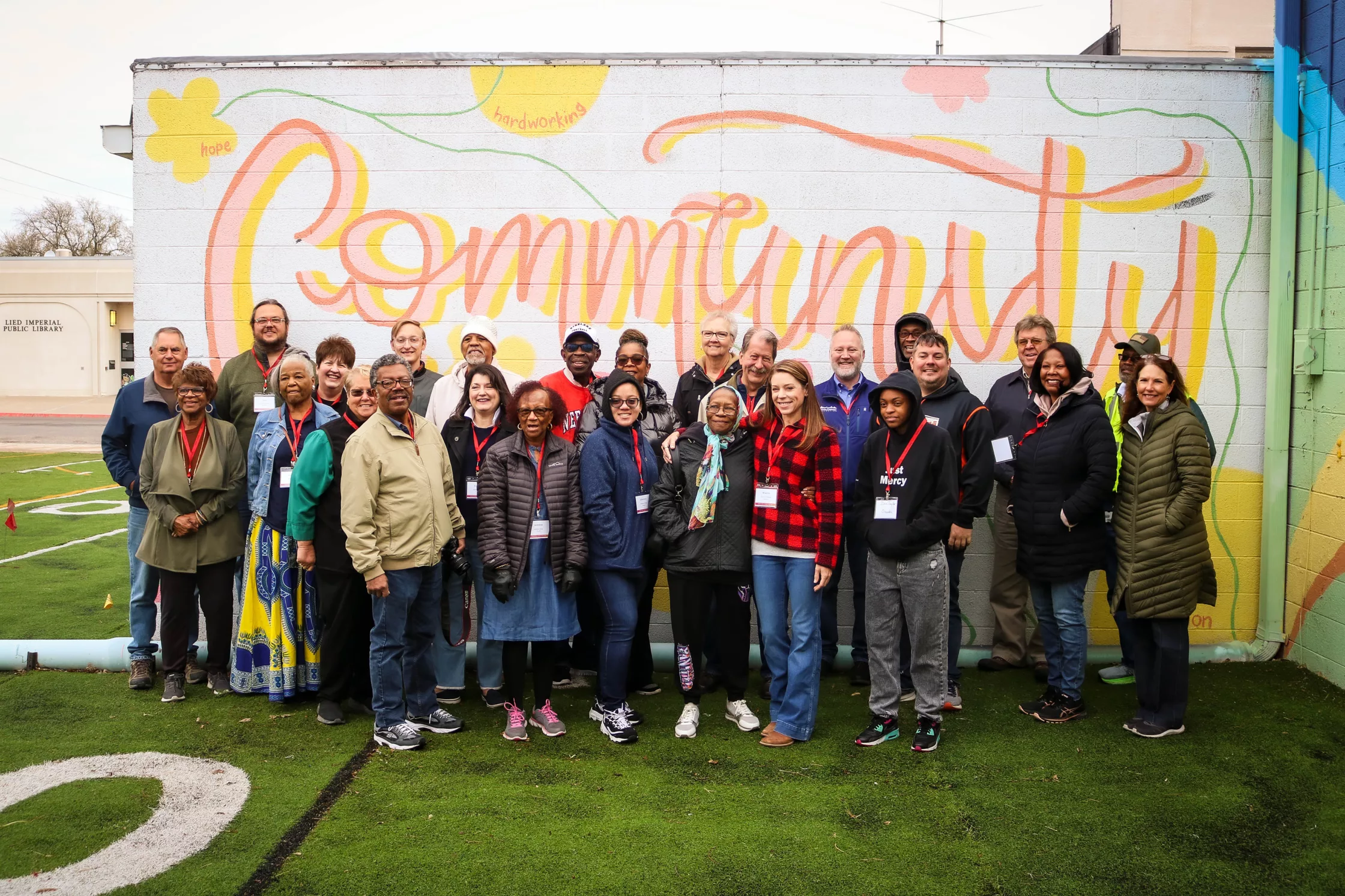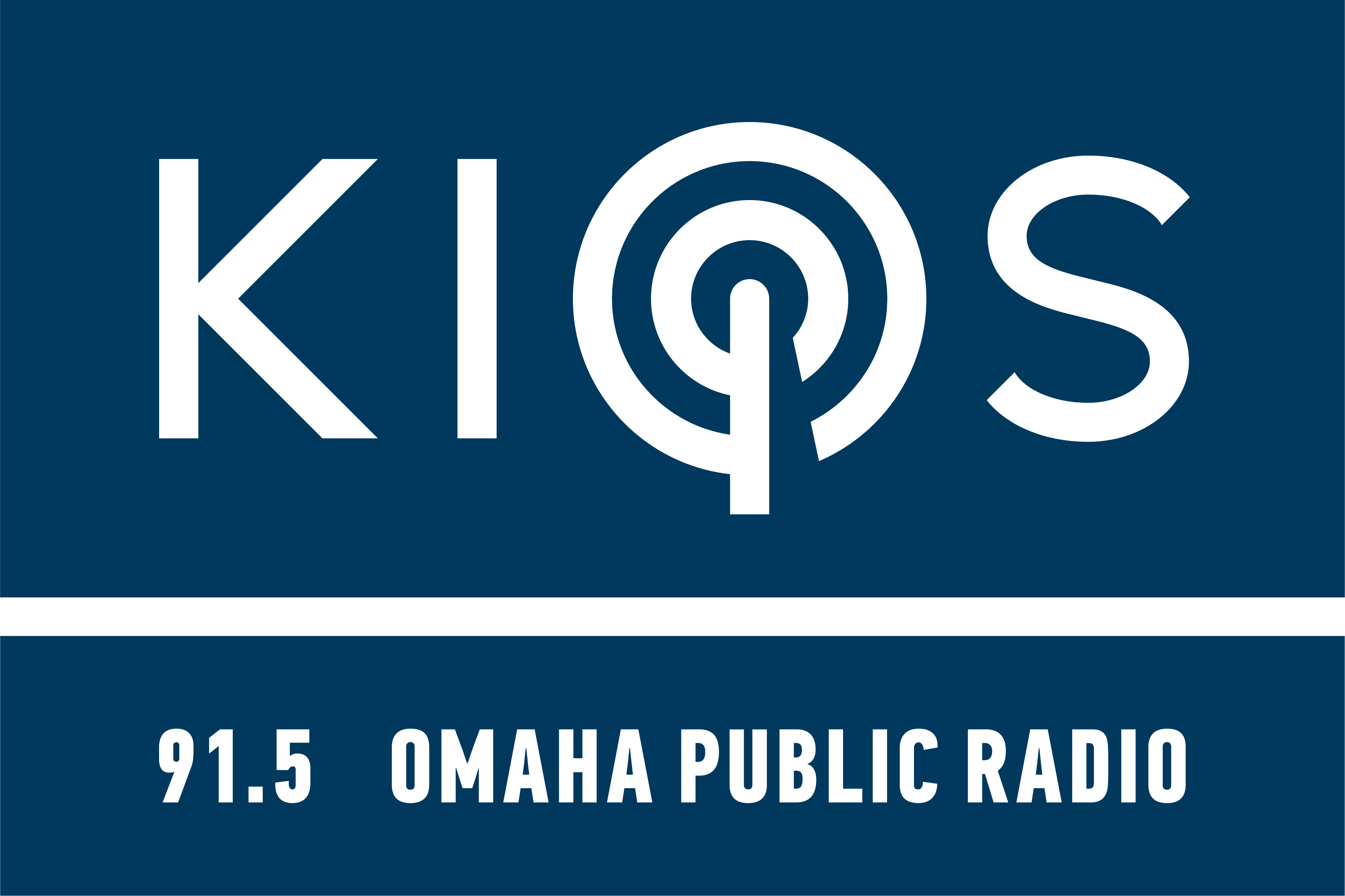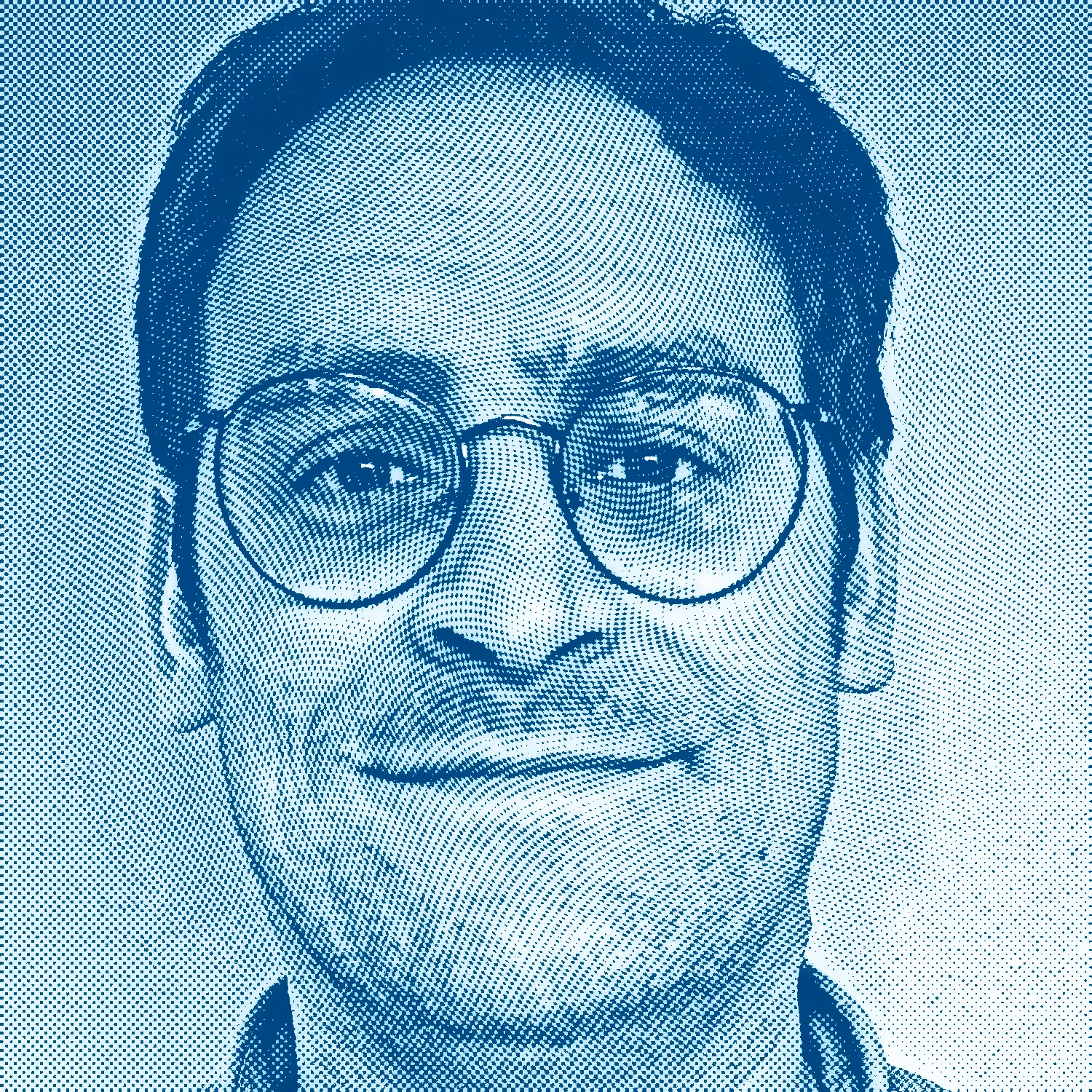Editor’s note: The Nebraska Community Foundation is a Flatwater Free Press sponsor. This story was edited by Flatwater Free Press staff, who retained editorial control.
The roughly 370 miles between North Omaha and the heart of southwest Nebraska aren’t slowing a group of Nebraskans from forging relationships that they hope will serve as a model for bridging the gulf between rural and urban communities.
In less than a year, residents from either end of that span have crossed the state to experience how the other side lives – from mock cattle auctions in Ogallala to a Juneteenth parade on Omaha’s North 24th Street. Momentum is gathering, and they have no plans to stop.
“We didn’t get into this problem overnight and we’re not going to get out of it overnight,” said McCook-area farmer Dale Dueland, one of the western Nebraskans participating in the exchange. “We’ve got to be committed to the long haul.”
This endeavor’s roots date to 2020, when longtime Omaha activist Preston Love Jr. wrote an open letter to rural Nebraska, encouraging residents across the state to put aside division and embrace one another. The fates of urban and rural Nebraska are inextricably linked, he argued, so why not focus on building a bright future together?
“I have discovered that you and I have so much in common, while ridiculously separated by distance, sometimes color, sometimes race, sometimes political persuasion, my reflection has taught me the truth of the matter,” he wrote. “That truth is that we both have the virtue of fertile ground and an abundance of seeds. So, what shall we do?”
The letter resonated with Nebraska Community Foundation President and CEO Jeff Yost. The two opened a dialogue that ultimately led to the idea of a sort of cultural exchange.
It began with two busloads of folks from rural Nebraska traveling to North Omaha in November 2022 as part of Nebraska Community Foundation’s annual celebration. After lunch at Big Mama’s Kitchen, Love led a driving tour of the community.
“We’re building relationships between Nebraskans to identify commonalities, build trust and find opportunities that are mutually beneficial,” Yost said.
The trip inspired volunteers out west to return the favor. In April, they hosted a two-day tour for a contingent of North Omahans including Love and his wife, Martha, as well as other community leaders.

The first stop on the trip west: McCook and the famed Sehnert’s Bakery. They were greeted by members of the local community foundation affiliate, including high school students with the affiliate’s youth leadership committee.
After eating, guests and hosts broke into groups to walk the streets of McCook. They toured the historical homes of George Norris and Ben Nelson, received a special look inside the Frank Lloyd Wright-designed Sutton House and got to see how the donuts are made at Sehnert’s.
From there they headed to Imperial. Dueland narrated the jaunt northwest on Highway 6 with information about agriculture, farmers cooperatives and water management in southwest Nebraska.
“We learned a lot today,” Love said later at dinner. “A lot about your community, a lot about your people, a lot about the work that you do and how important that little center pivot is to your survival. We learned that, we go home with that and we’ll take that message back. It’s a bridge, if you will.”
There is certainly division to bridge.
Nearly 60% of rural residents surveyed by the Pew Research Center in 2018 said their values don’t align with those living in urban areas. More than half of city dwellers (53%) said the same about rural residents.
Most residents in urban areas said rural communities looked down on or misunderstood them – rural residents said the same about urban communities.
Polling closer to home has identified differences.
Among rural Nebraskans, 66% described their community’s political views on social issues as conservative, compared to 48% in metro areas, according to the 2021 Nebraska Rural Poll conducted by the University of Nebraska-Lincoln.
More generally, metro residents were more likely to believe they are better off compared to five years ago and will be better off 10 years from now, according to the UNL poll.
But there are commonalities.
Similar percentages of rural and urban Nebraskans expressed positive views of their jobs, their friends, their families, their personal safety and their communities.
The national Pew survey found residents in both types of communities worry about drug addiction, availability of affordable housing, availability of jobs and infrastructure conditions, among other issues. Both groups want a good place to raise children, a strong sense of community and access to recreation.
“Like every town and community in Nebraska, we’re loaded with people with inspiration, with hope, with prospects of having a good life,” said Imperial farmer and local historian Charley Colton during a dinner presentation. “Everyone in this room wants the best for their community. We all want to provide for the next generation.”

Outside of Imperial, the North Omaha tour bus pulled into the Wine Glass Ranch – known for its land management and conservation practices. Logan and Brianna Pribbeno are the fifth generation to steward the land.
Brianna grew up in southern California, and she remembers thinking the rift between the northern and southern halves of that state was silly. When she moved to Nebraska with Logan in 2012, she didn’t think she would encounter that kind of divide again. She’s hoping efforts like the bus tour can close the chasm.
“I experienced very quickly that western and eastern Nebraska are very divided places,” Brianna said. “There are a lot of misconceptions about both sides of the state and how we’re each experiencing life. I want both sides of the state to come together. I recognize we have a ton in common. Let’s find that common ground.”
The tour’s final leg included a mock auction at Ogallala Livestock Auction Market and a bus tour of Ogallala landmarks such as Boot Hill, the Mansion on the Hill and Lake McConaughy.
On the way back east, outside of Goehner on Interstate 80, driver D. Kevin Williams looked into the rear-view mirror and remarked on the horizon illuminated in a wash of red, orange, and pink. “We left them a beautiful sunset.”
***
The visitors from McCook, Imperial and Ogallala arrived in North Omaha on the Friday before Juneteenth.
They gathered at Mt. Moriah Baptist Church, just north of 24th and Lake streets to learn about the highest highs and lowest lows of North Omaha history. The trip marked the latest exchange in a flourishing connection.
“It was more like a family reunion, and we just didn’t have enough time,” said Lorraine Jackson, president of Omaha’s National Council of Negro Women (NCNW) chapter. “We wanted more time.”

The group shared laughs and stories Friday evening over a meal prepared by the NCNW chapter. They also reflected on pain and hardship.
That afternoon, the contingent watched as the City of Omaha renamed a portion of 21st Street near Logan Fontenelle Park in remembrance of Vivian Strong, a 14-year-old girl killed by an Omaha police officer in 1969. The killing left deep wounds in the community, setting off unrest that resulted in the destruction and closure of local businesses, many of which never recovered.
“Vivian Strong is part of our community’s pain, and we opened up the door and welcomed you into that side,” Love said. “Not just the Juneteenth-celebration side, but the pain. It made us closer to you because you now have seen that side. The pain of our family.”
After dinner, the visitors departed with their hosts for in-home overnight stays in the community.
They returned to the church the next morning before the parade barricades went up along 24th Street. After breakfast, they lined up to watch the Juneteenth celebration. Love frequently ventured into the parade route, bringing back North Omaha leaders to introduce to his guests.

A week after the Omaha visit, the group reconvened for a virtual debrief. Those on the call from out west expressed gratitude toward their Omaha hosts.
Love said people he’s talked to in his community were impressed by the initiative and see value in the burgeoning connections.
“Now that it’s on the table, it is being talked about,” he said. “If you plant a good seed sometimes there will be weeds and sometimes the seed will grow in places where you didn’t plant.”
Both groups say they aren’t ignorant of the difficult task ahead of them, but they are steadfast in their dedication to bringing historically distant Nebraskans together.
For Reverend T. Michael Williams of Mt. Moriah, creating stronger connections and vibrant communities for future generations remains the goal.
“We’re just setting the table,” he said. “Lord willing, they’ll be able to eat from it.”




5 Comments
Enjoyed the article, and wish there was an initiative like it here in Texas where the urban/rural divide is perhaps even more pronounced than it is elsewhere. Kudos to the people that participated: it takes character to step out of our comfort zones in the interest of things like unity.
Love this! They should have taken the the urban kids to a real livestock auction and the rural kids to the Sioux City stockyards. Been there, done both! I’m glad to see that real journalism is still happening in Nebraska.
Great program. We all need to learn about people/places that we perceive are different. I grew up in North Omaha and now live in SW Omaha. This program could be offered within Omaha.
This is great. Living in a larger community, in the center of the state, we see the divide between rural and urban with people living less than two miles apart. Programs like the one you reported on, open up dialogue with strangers, which is sometimes easier than conversations between neighbors.
I enjoyed reading about this exchange between urban and rural Nebraskans. I lived in Gothenburg for three and a half years as a child. Most my childhood was in rural communities in IL and NE until I was 12, when we moved to Omaha. I am interested in participating in this program. Thank you for this article.